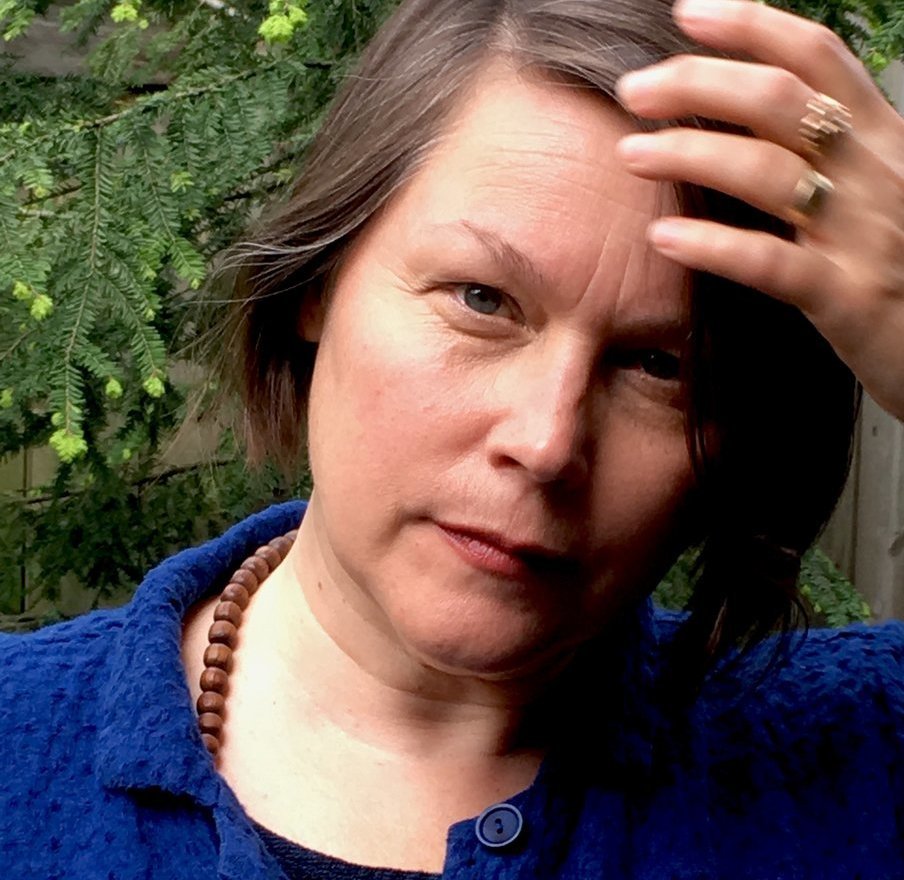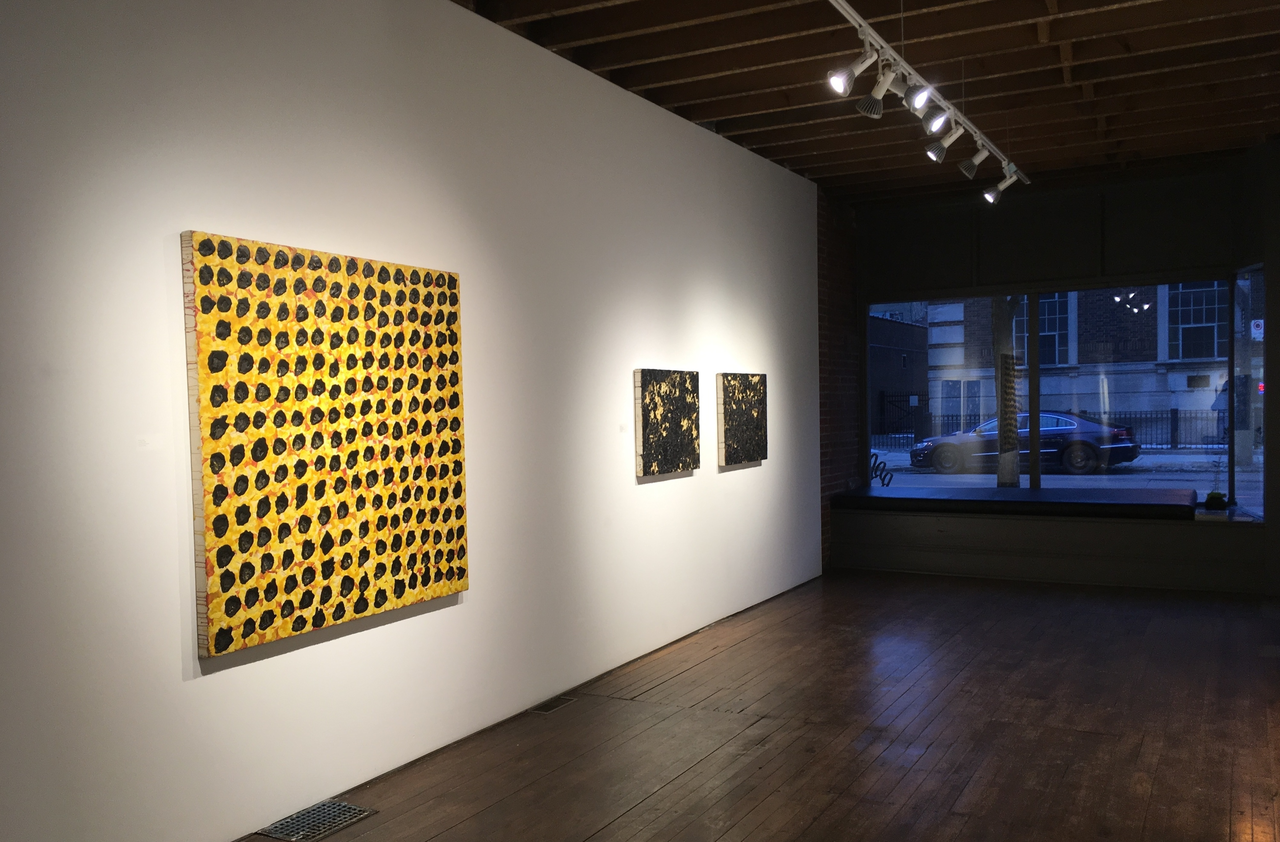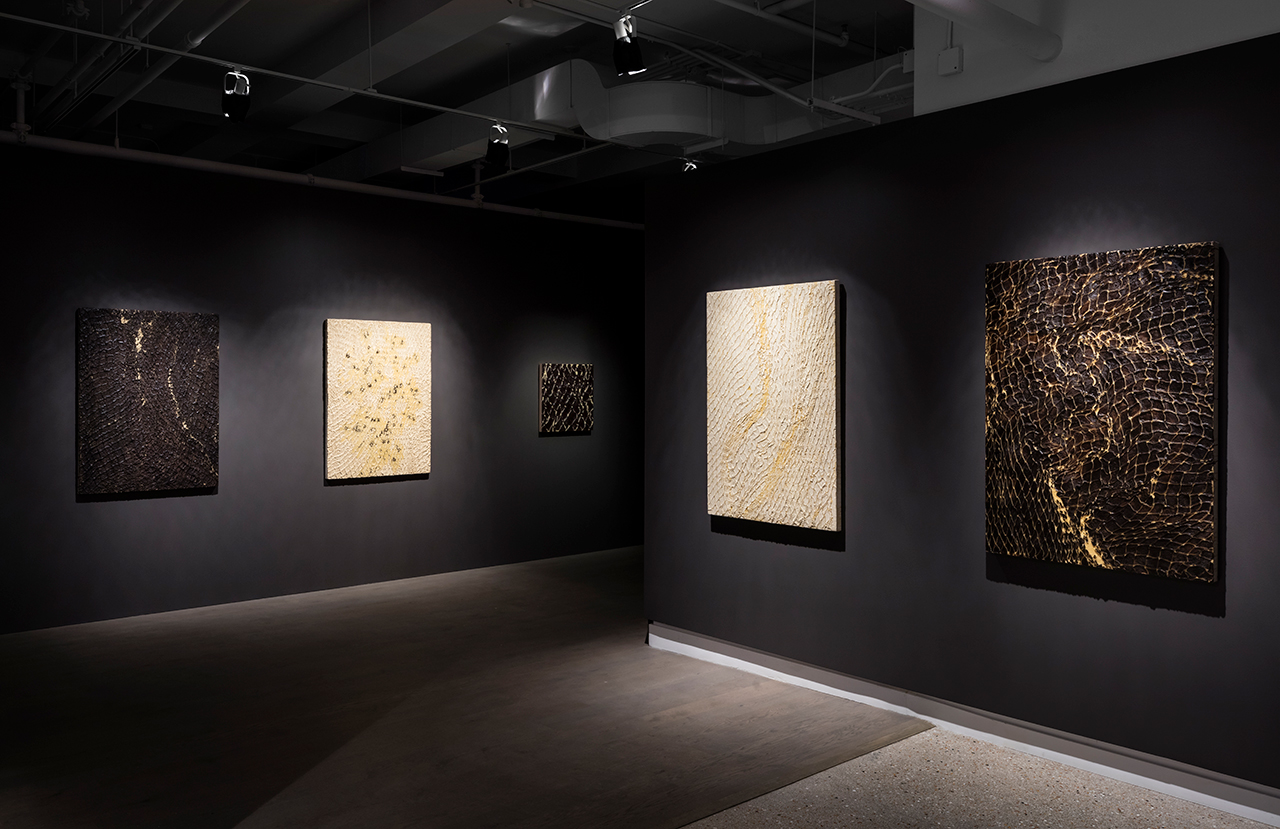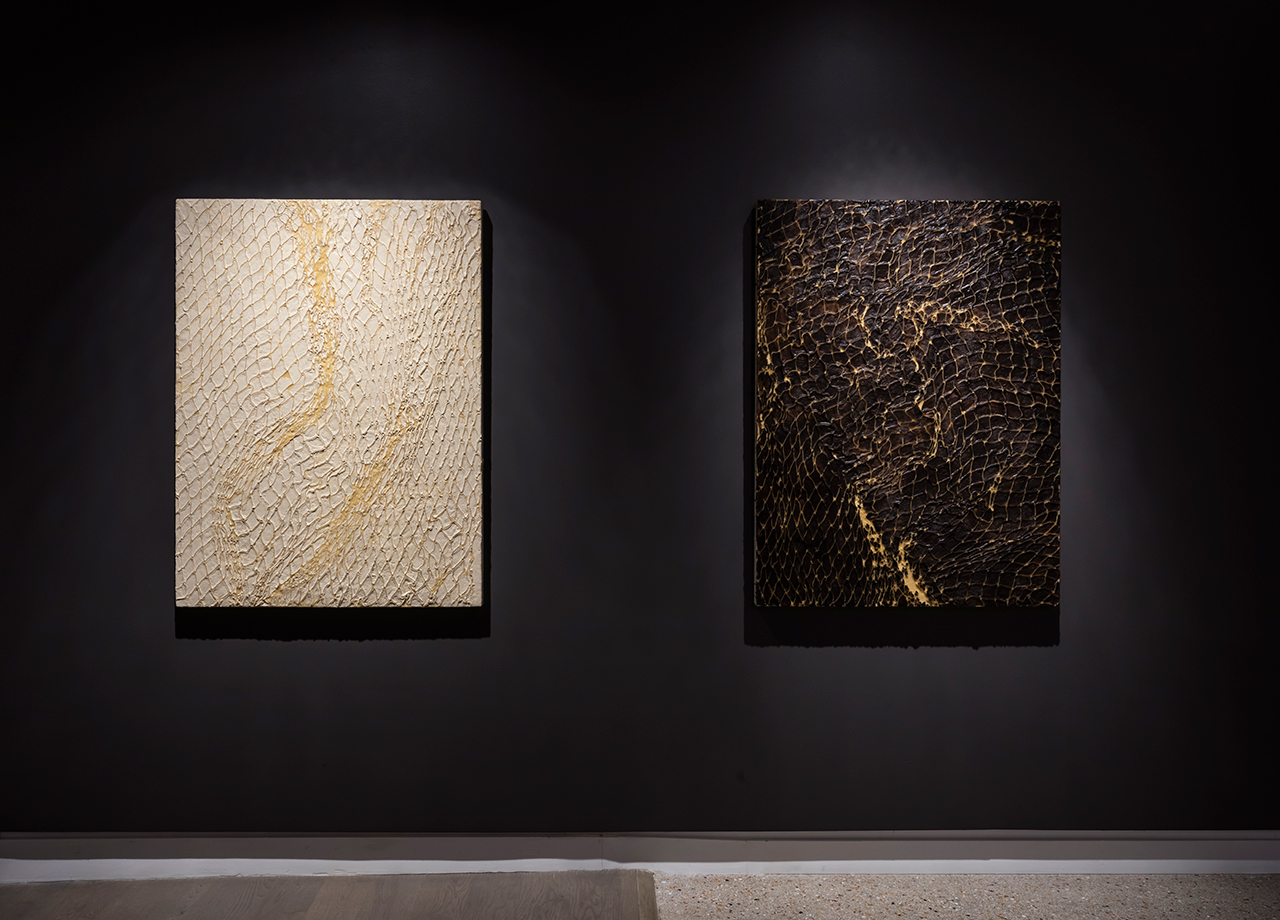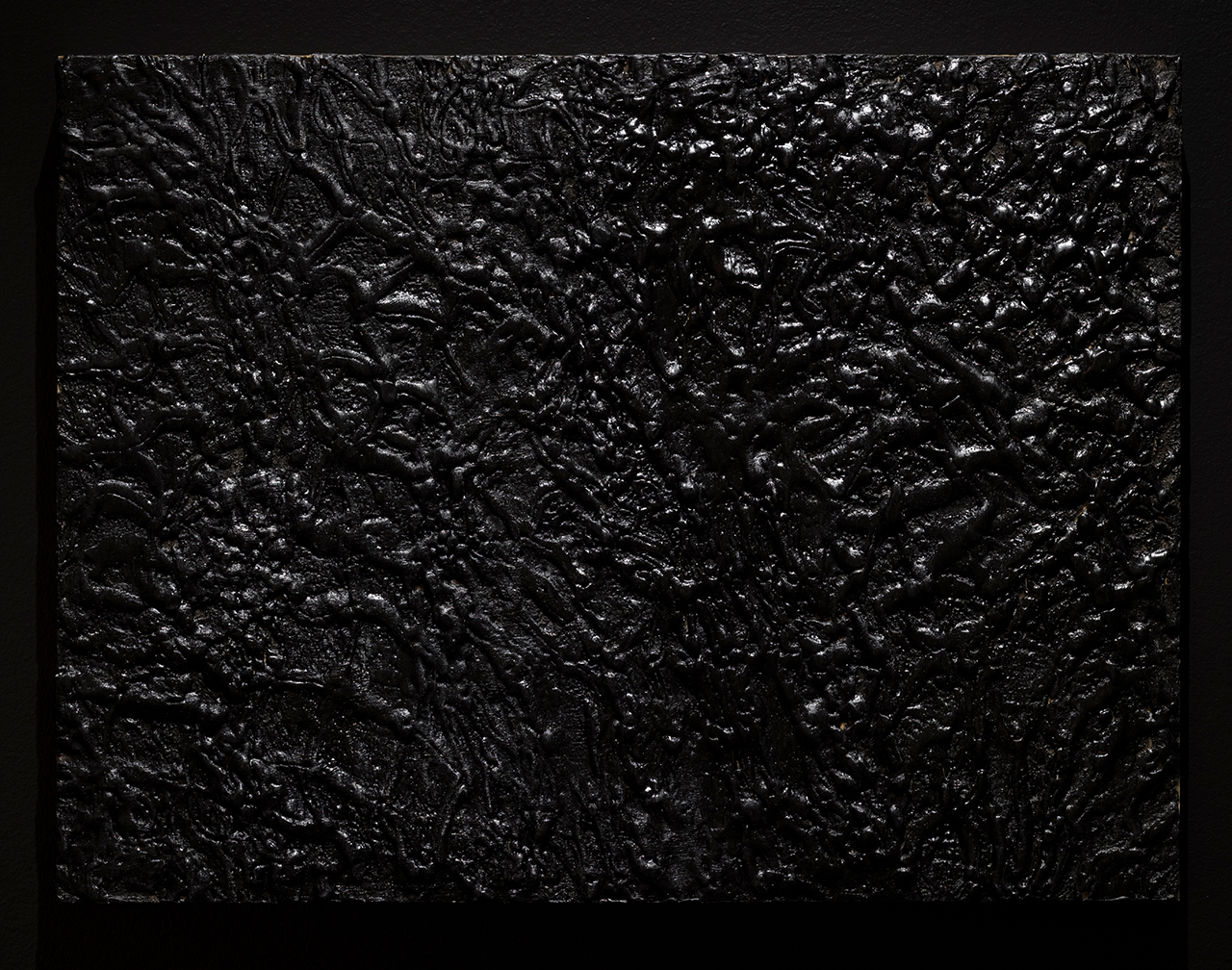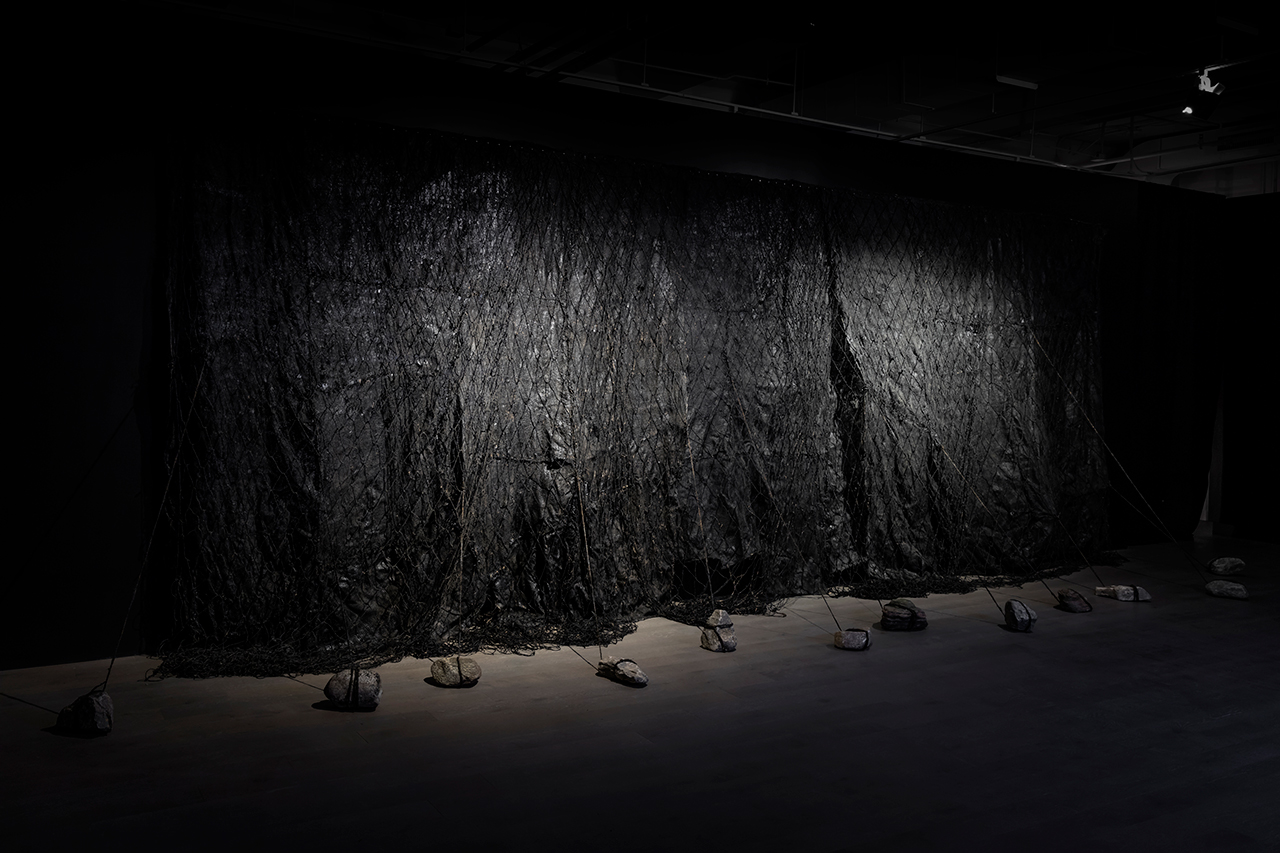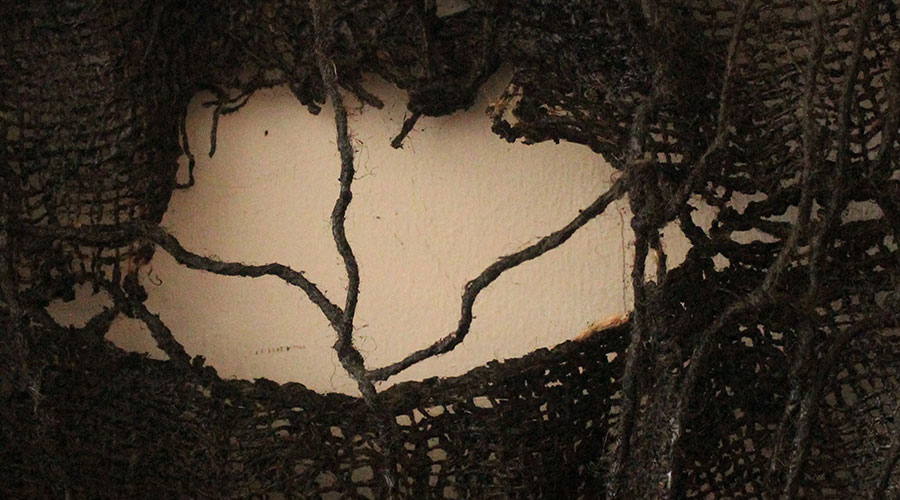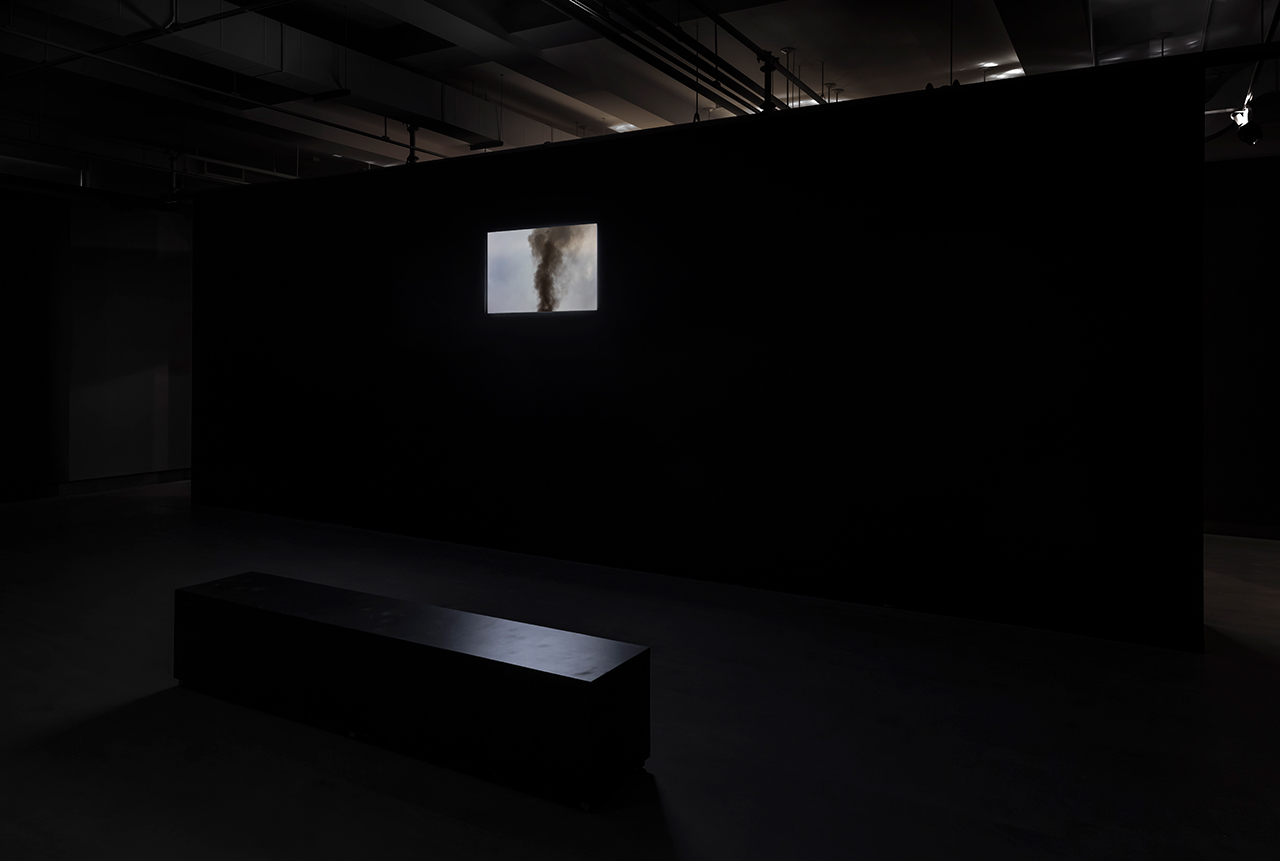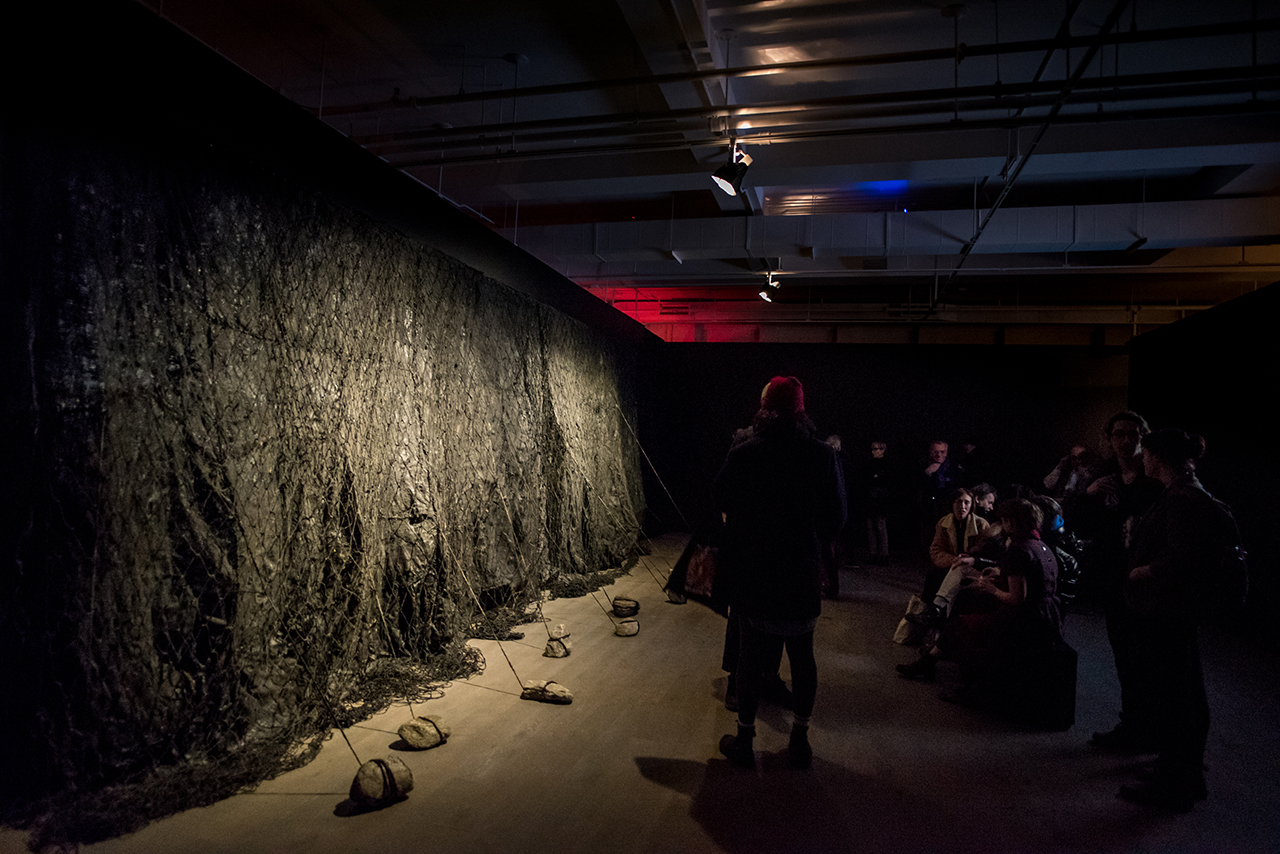Nicole Collins, 2017. Photo: Michael Davidson
Interview with Nicole Collins (NC) by Emese Krunák-Hajagos (EKH)
Nicole Collins has two exhibitions on at the same time, One Shot at General Hardware and Furthest Boundless at Koffler Gallery.
EKH: For One Shot at General Hardware you wrote, “The final marks are black (for bile, melancholy), the very first time I used black on a painting, an indicator of an obsession that has played out over the ensuing 24 years and found its’ zenith in Furthest Boundless.” What came first: the theme of death or the color of black?
NC: First I’d like to note the power of collaboration in creating exhibitions. The ability to bring out work from 1994 and hang it next to absolutely recent paintings is one of the real pleasures of working with Niki Dracos at General Hardware, who brings her fresh and insightful eye to the studio and sees things that are invisible to me. Mona Filip, Curator of the Koffler Gallery, my ‘sister in darkness’, gave me the location, vision and support to create a space for a deeper contemplation of this, our deepest question.
Yours is an almost impossible question to answer…
The theme of death could be argued to be the basis of all art, in that the life force drives us to make something, a painting, a song, a play, and each of these comes to an “ending”. Certainly, in my experience, death has been present since the age of 18 months when my 3 year old brother died, followed, too soon, by the passing of my father, my uncle, my younger brother and, much later, my mother. Alongside joy and creativity, loss and grief have been a constant presence, strange gifts that make each day feel crucial and very precious. In Humores, 1994, each of the four bodily “humours” (from Medieval medicine beliefs) were assigned a colour, culminating in “black bile”. The colour black, besides being the “absence” of, and contrast to light, can also be created by carefully layering all of the primary colours until they combine into a rich chromatic darkness. This colour that contains ALL colour has fascinated me, and its reference to darkness, the absence of light, has always struck me as comforting, a blanket of darkness in which to rest.
Installation view of Nicole Collins, One Shot with Humores, 1994, 54 x 54 in, at General Hardware Contemporary, 2018. Photo courtesy of the artist
EKH: You mention two concepts of Ancient Greek philosophy, Aphelion and Apeiron, that inspired you. How are these ideas embedded into your work?
NC: I am very interested in both Greek Philosophy and Theatre, especially the vivid translations by poet and scholar Anne Carson. Another part of my research and process involves “dictionary diving”, using many different hard copy and digital dictionaries, dipping in, seeking the meaning of one word and wandering in the vicinity, leading to unexpected discoveries. In a series of “dives” I found both apeiron, a term used by the philosopher Anaximander to describe the boundless substance of origin for all life, and aphelion, the point on the orbit of a celestial body that is furthest from the sun, and therefore the darkest. When Mona Filip (curator at the Koffler Gallery) approached me to do an exhibition, I saw an opportunity to realize a much larger scale and ambitious installation than had previously been possible. As the work in Furthest Boundless evolved, I somehow conflated these two to create a space for open contemplation of that which we experience as an ending. As the video and sound cycle in and out of synch, reflecting into the blackness of the wall of wax and netting, circling back upon themselves, a possibility of continuation reveals itself. It’s all speculation of course. I’m in no hurry, but I am very interested in what happens to our consciousness after this body fails.
Nicole Collins, Furthest Boundless, Koffler Gallery installation detail, 2018. Photo: Toni Hafkenscheid
EKH: The installation at Koffler salutes and embraces death. Anxiety related to facing death and the unknown that follows is deeply rooted in the human mind. It forces us to ask the most difficult questions about the meaning of life and explore our greatest fears. Why did you choose death as the theme for this installation?
NC: I feel that death chose me a long time ago. As a child I was unable to attend the funerals, and there was little to no guidance around dealing with grief, so for the most part it was just ignored and life went on. Ironically, despite all these losses, I am not especially good at dealing with death (of friends and acquaintances). However, I accept that some kind of transition will come to us all. It wasn’t until my Mother passed in 2009, leaving me as the last of my immediate family, that I felt free and able to explore the repressed grief that had accumulated, and more than ever, every day I try to do something meaningful and life-affirming.
Nicole Collins, Furthest Boundless, Koffler Gallery installation detail, 2018. Photo: Toni Hafkenscheid
EKH: The texture of the mainly black paintings reminds me of wet soil stuck on shovels beside freshly dug graves. Where is this motif coming from and how do you recreate it in the surface of your paintings?
NC: There is no re-creation in these works, but there is a lot of collaboration with the materials. In the Apeiron, I have hand-tied all of the nets and ropes, stitched together the ripped and broken fragments of burlap and coated all of them in the wax and charcoal encaustic paint that gives them their colour, texture and form. There is a meditative and ritualistic quality to this making that I could never hand over to a studio assistant, no matter how long it might take to realize the work (in this case about 2 years). Wax, when applied in specific ways, has an innate tendency towards texture, which seems to me, to reflect a material memory. The microcrystalline wax is a petrochemical by-product and brings the ancient earth with it; the charcoal is burnt wood, and shows traces of its previous life as bark and bough.
In the framed paintings, the texture comes from the application of hot, pigment-soaked wax and the process of embedding woven and netted fibres, layering, and then removing them, leaving behind the image of what was there, a “present absence”.
Nicole Collins, Furthest Boundless, Calcine, 2015, Koffler Gallery installation detail, 2018. Photo: Toni Hafkenscheid
EKH: Entering the back room in the dark there is a large woven nest – very dramatic. It felt like seeing the spirits of the dead trying to escape through the holes or hanging onto it for a few more moments saying farewell to this world. Please tell us more about the imagery of this wall and of your artistic method in creating it.
NC: Well, I absolutely love this reading of the work. Apeiron, for me is both material and location. It is something outside of time as we perceive it. Someone referred to the ropes and rocks as holding the net up, rather than holding it in place. I did not plan that tension, but it certainly presented itself once the tying off took place. It’s worth noting that I do not have a 30-foot wall in my studio, and could only ever look at the work in components until the week of installation. Mona Filip, the curator, and Corinne Carlson, the lead installer, brought the whole thing home with pitch perfect design, environment, sound and lighting.
Nicole Collins, Furthest Boundless, Apeiron, Koffler Gallery installation detail, 2018. Photo: Toni Hafkenscheid
EKH: The introduction at Koffler says that “Driven by an impulse to repair, Collins’ visceral paintings attempt to suture, layer and preserve the damaged”. How did you approach this in the show?
NC: The often futile act of reparation has always been with me, in large part because of the many illnesses experienced in my family, but also influenced by my Memère. During the Depression in rural New Brunswick she raised 8 children (of 16 pregnancies, child mortality being very high), made all their clothes, all curtains, bedding and carpets from salvaged scraps, ran a farm, a kitchen that fed many outside of her own family, and lived to 84 years. She taught me how to make pastry, how to crochet and sew a little. I think of her while I’m whip-stitching or basting torn and broken fragments of burlap or tying jute into nets in the studio.
Nicole Collins, Apeiron (detail, work in progress), 2017. Photo courtesy of the artist.
EKH: Loss and grief have an overwhelming presence in this exhibition. The added video and sound-effects somehow lift the dark veil of the underworld and bring a more ethereal dimension to it. Please tell us how you decided on and incorporated them into the installation. Did you intend to modify the vision of death with them?
NC: The video (Aphelion) and sound (Signal) are two of the 3 elements that make up Furthest Boundless (the third being Apeiron). I have written a short piece that is included in the Koffler Digital Publication, L’Esprit de L’Escalier, also the name of a wonderful sound piece by CCC that is currently featured in the stairwells of Artscape Young Place (http://www.koffler.digital/lesprit/). Entitled 11:11, it describes the day that inspired this brief video of the material transition realized in the process of cremation.
Nicole Collins, Furthest Boundless with the video (Aphelion), Koffler Gallery installation detail, 2018. Photo: Toni Hafkenscheid
The sound is composed of a very slowed down and abstracted version of Shape Note Singing (see www.fasola.org). I have practiced Shape Note since 2008, when I discovered it in my research, while completing my Masters of Visual Studies (broadly defined) at University of Toronto. An instructional method for congregational, harmonic singing, dating from the early 1800’s in New England and then migrating to the Southern States, Shape Note is sung in 4 parts, acapella, in a social setting. It is highly democratic, participatory rather than performative. The sound consists of powerful chords, and features lyrics that do not shy away from mortality, being written, as many songs were, during harsher times. The first verse of one of my favourite tunes goes as follows:
“And am I born to die?
To lay this body down?
And must my trembling spirit fly
Into a world unknown?” – Idumea 47b, from The Sacred Harp, 1991 Denson edition
Nicole Collins, Furthest Boundless, Koffler Gallery opening reception, 2018. Dahlia Katz Photography
On Sunday February 25 there will be a talk about the relationship between the practice and the artwork, including a singing by the Toronto Shape Note Singers at the Koffler Gallery inside Furthest Boundless. All are welcome to participate or observe.
*Exhibition information: Nicole Collins, One Shot, January 20 – February 24, 2018, General Hardware Contemporary, 1520 Queen Street West, Toronto. Gallery hours: Wed – Sat, 12 – 6 pm & Nicole Collins, Furthest Boundless, January 18 – March 18, 2018, Koffler Gallery, Artscape Youngplace, 180 Shaw Street, Toronto. Gallery hours: Tues – Fri 12 – 6 pm, Sat & Sun 11 am – 5 pm.

